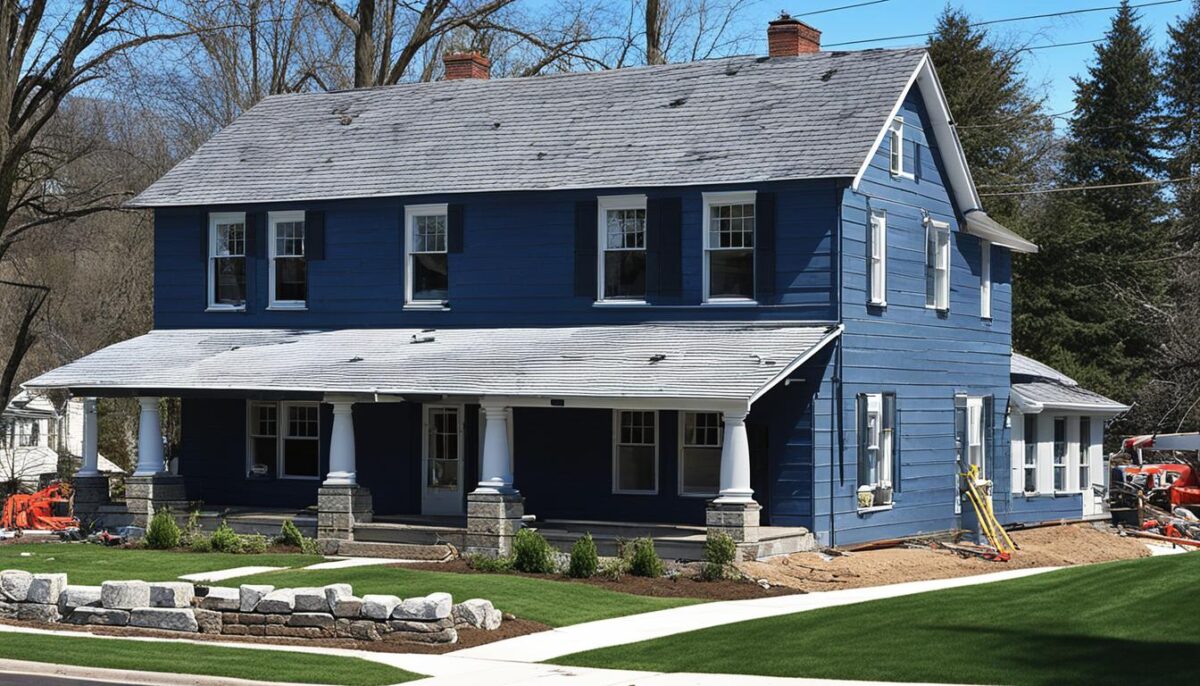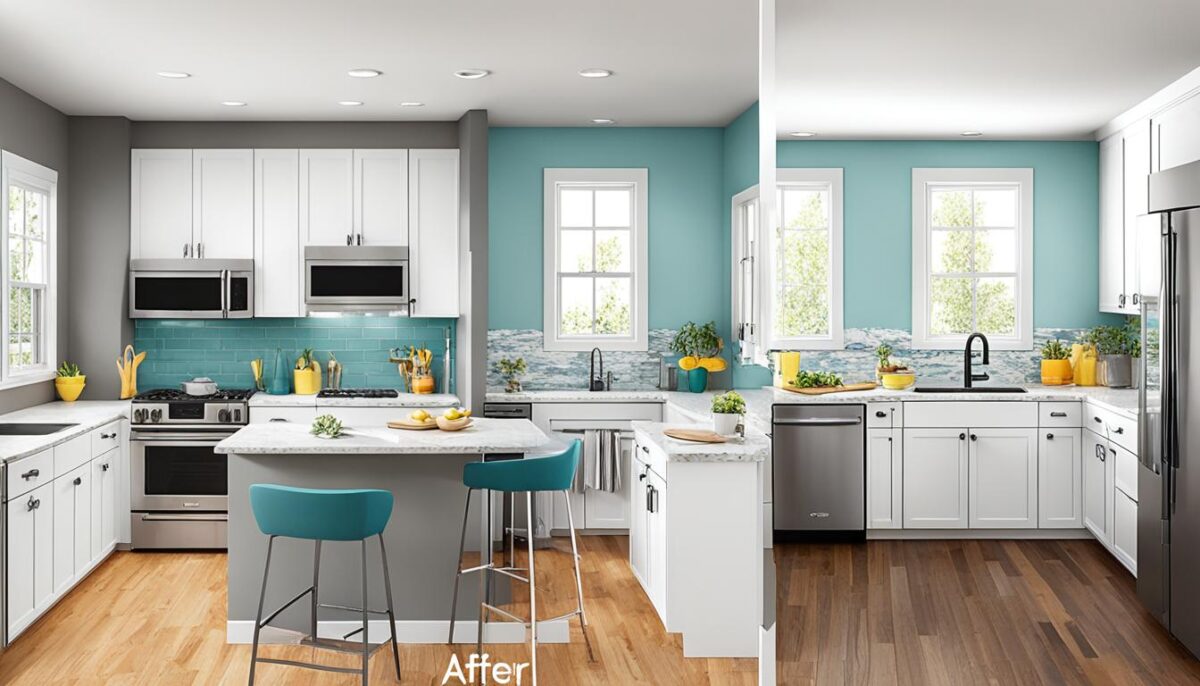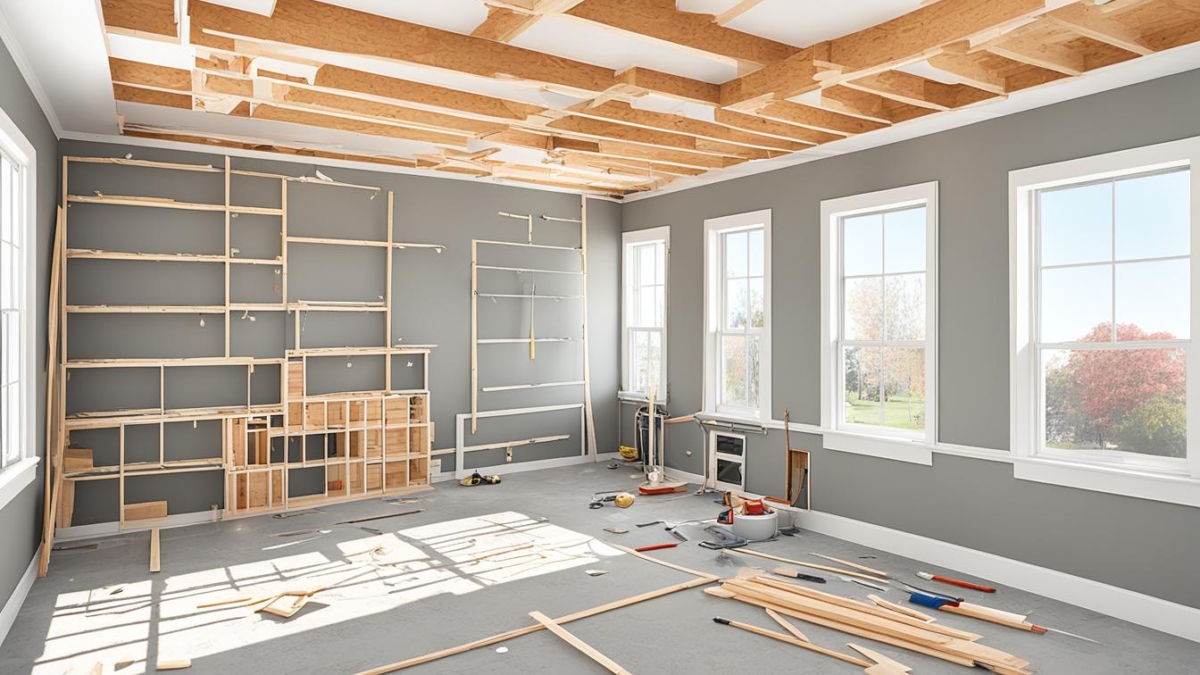Welcome to our guide on how to maximize efficiency and value in your home renovations. Planning the order in which to tackle your renovation projects is essential to ensure a smooth and successful remodeling journey. By following a strategic approach, you can make the most of your resources and achieve the results you desire.
In this article, we will explore the optimal sequence for your home renovations, allowing you to prioritize effectively and avoid common pitfalls. Whether you are starting from scratch or looking to upgrade specific areas of your home, understanding the order in which to tackle renovations can save you time, money, and headaches along the way.
From evaluating priorities to addressing structural changes, essential systems, layout modifications, and cosmetic upgrades, each step in the renovation process plays a crucial role in creating a functional, visually appealing, and valuable living space.
Evaluating Priorities
Before embarking on your home renovations, it’s crucial to evaluate your priorities and create a clear plan of action. By carefully considering factors such as budget, functionality, and desired outcomes, you can make informed decisions and ensure that your resources are allocated efficiently.
Determining Your Budget
One of the first steps in prioritizing your home renovations is establishing a realistic budget. Evaluate your financial situation and define how much you are willing to invest in your project. This budget will guide your decision-making process and help you allocate funds accordingly.
Focusing on Functionality
Functionality is a key consideration when prioritizing your home renovations. Assess the specific needs of your household – do you require more space, better organization, or improved flow within your living areas? By identifying the functional improvements that will enhance your daily life, you can direct your efforts towards these areas and maximize the practical benefits of your renovation project.
Considering Long-term Value
When evaluating priorities, don’t solely focus on immediate needs. Consider the long-term value that certain renovations can bring to your home. For example, investing in energy-efficient upgrades can lead to significant savings on utility bills over time. It’s essential to strike a balance between short-term improvements and long-term benefits for a well-rounded renovation plan.
| Priority | Description |
|---|---|
| 1 | Addressing structural issues that may affect the safety and stability of your home |
| 2 | Upgrading essential systems such as plumbing, electrical, and HVAC |
| 3 | Optimizing layout and functionality to improve the overall flow and efficiency of your living spaces |
| 4 | Enhancing the aesthetic appeal of your home through cosmetic upgrades |
By evaluating your priorities and considering factors such as budget, functionality, and long-term value, you can create a roadmap for your home renovations that ensures the most crucial aspects are addressed first. This strategic approach will help you achieve a home that not only meets your immediate needs but also adds value and enhances your quality of life in the long run.
Start with Structural Renovations
When it comes to home renovations, starting with structural changes is a smart move. By addressing any issues related to the foundation, walls, roof, or major structural elements, you can ensure the safety and integrity of your home before moving on to cosmetic upgrades.
Structural renovations play a crucial role in maintaining the long-term stability of your property. Whether it’s repairing a cracked foundation, reinforcing load-bearing walls, or fixing a leaky roof, addressing these structural issues early on prevents further damage and sets a solid foundation for the rest of your home renovation project.
By prioritizing structural renovations, you not only ensure the safety of your family and your investment but also prevent potential safety hazards down the line. Neglecting structural repairs can lead to more significant and expensive problems in the future.
“Addressing structural renovations is like building a strong and secure foundation for your home. It’s the first step in creating a space that can withstand the test of time.” – Jason Anderson, Renovation Expert
Structural renovations can be complex, and it’s important to work with reputable professionals who have expertise in this area. Hiring a qualified contractor or structural engineer can help you accurately assess the condition of your home and determine the necessary repairs or modifications needed to ensure its safety and structural integrity.
Ensuring a Solid Foundation for Your Home
One of the key aspects of structural renovations is addressing issues with the foundation. The foundation is the base upon which your home stands, providing stability and support. Any signs of foundation problems, such as cracks, uneven floors, or doors that stick, should be addressed promptly.
An experienced contractor or structural engineer can assess your foundation and recommend appropriate repairs, which may involve foundation underpinning, crack repairs, or drainage improvements.
Additionally, paying attention to other structural elements like load-bearing walls, beams, and columns is essential. Strengthening or repairing these features ensures the overall stability of your home and supports any future modifications or renovations you have in mind.
Remember, prioritizing structural renovations may involve temporarily disrupting your daily routines and living arrangements. However, this short-term inconvenience pales in comparison to the long-term benefits of a safe, stable, and well-maintained home.

In the next section, we’ll explore essential systems that should be prioritized during your home renovation project. These systems play a vital role in ensuring your home functions smoothly and efficiently.
Focus on Essential Systems
When it comes to home renovations, prioritizing essential systems such as plumbing, electrical, and HVAC is crucial. Addressing these systems early on in the remodeling process can prevent future disruptions and save you from the need for extensive changes later.
By ensuring that your home’s infrastructure is in good shape from the start, you lay a solid foundation for the rest of your renovations. Upgrading essential systems not only improves functionality but also enhances the overall comfort and efficiency of your home.
Plumbing upgrades can help prevent leaks, improve water flow, and increase water efficiency, while electrical upgrades ensure the safe and reliable operation of your home’s electrical system. Upgrading your HVAC system can help with energy efficiency, indoor air quality, and temperature control.
With these essential systems taken care of, you can proceed with the rest of your renovations with peace of mind, knowing that your home is equipped with modern, reliable systems.
“Upgrading essential systems early on can prevent future disruptions and save you from having to make extensive changes later.”
Cost Considerations
Prioritizing essential systems in your home renovations may require a significant investment upfront. However, it is important to remember that these upgrades can save you money in the long run by preventing costly repairs and reducing energy consumption.
Consulting with professionals in the respective fields of plumbing, electrical, and HVAC can help you understand the specific needs of your home and create a budget that aligns with your goals and priorities.
The Importance of Professional Installation
While some smaller repairs or upgrades can be DIY projects, it is recommended to hire licensed professionals for major installations or renovations involving essential systems. Professional expertise ensures that the work is done safely, meets building codes, and maintains the warranty of the systems.
When selecting contractors for your home renovations, be sure to verify their credentials, ask for references, and obtain detailed cost estimates before making a decision.
By prioritizing essential systems and investing in professional installation, you can have peace of mind knowing that your home is equipped with reliable and efficient systems that will serve you well for years to come.
Layout and Functional Modifications
Once the structural and essential system renovations are complete, it’s time to focus on optimizing the layout and functionality of your home. This stage of the renovation process allows for reconfiguring rooms, maximizing space utilization, and improving traffic flow. By addressing these aspects early on, you can create a more functional and enjoyable living space.
One effective approach to layout and functional modifications is to consider the specific needs and preferences of your household. This could involve adjusting the size and layout of rooms to better suit your lifestyle or removing walls to create an open-concept living area.
Space optimization is a key consideration during this stage, as it allows you to make the most of every square foot in your home. This might include adding storage solutions such as built-in cabinets, shelves, or multi-purpose furniture to maximize useable space. Additionally, consider incorporating smart home technology to enhance convenience and efficiency throughout your home.
Improving traffic flow is another critical aspect of layout and functional modifications. By ensuring that pathways and doorways are properly positioned and free from obstructions, you can create a more seamless and harmonious flow between different areas of your home.
Key Considerations for Layout and Functional Modifications
- Assess the specific needs and preferences of your household
- Optimize space utilization through creative storage solutions
- Consider integrating smart home technology for added convenience
- Enhance traffic flow by carefully positioning pathways and doorways
By paying attention to layout and functionality, you can transform your home into a well-designed space that reflects your lifestyle and maximizes its potential.

Cosmetic Upgrades and Aesthetics
Now that the structural renovations and essential system upgrades are complete, it’s time to focus on the cosmetic upgrades and aesthetics of your home. These final touches will enhance the visual appeal and overall ambiance of your space, making it more inviting and enjoyable for you and your family.
One of the main aspects of cosmetic upgrades is painting the walls. A fresh coat of paint can instantly transform the look and feel of a room, giving it a new lease on life. Choose colors that complement your personal style and create the desired atmosphere in each space.
In addition to painting, consider upgrading your flooring. Whether it’s replacing worn-out carpets with hardwood or installing new tiles in the kitchen, upgrading your flooring can significantly improve the aesthetics of your home. This investment not only enhances the visual appeal but also adds value to your property.
Another area to focus on is installing new fixtures. Upgrading light fixtures, faucets, and cabinet handles can add a touch of elegance and modernity to your home. Consider choosing fixtures that align with your overall design theme and color scheme to create a cohesive look throughout.
Lastly, don’t forget about adding decorative elements to complete the aesthetic transformation. From artwork and mirrors to plants and vases, these small details can contribute to the overall ambiance and create a sense of warmth and personality in your home.
By saving cosmetic upgrades for the final phase of your home renovations, you can ensure that they are not compromised or damaged by earlier construction work. This approach allows you to focus on the aesthetics and visual appeal of your space, giving it the finishing touches that truly make it feel like home.
Conclusion: Achieving a Smooth Remodeling Journey
By following a logical order for your home renovations, you can achieve a smooth remodeling journey that is efficient and adds value to your home. Planning and prioritizing are crucial steps in this process, ensuring that you stay on track and within budget.
Start your renovations with structural changes, such as addressing any foundation or major structural issues. This sets a strong foundation for the rest of the project and ensures the safety and integrity of your home.
Next, focus on essential systems like plumbing, electrical, and HVAC. Upgrading these systems early on can prevent future headaches and provide peace of mind. A well-functioning home is not only more efficient but also adds value if you choose to sell in the future.
Once the structure and essential systems are taken care of, you can turn your attention to layout and functional modifications. Reconfiguring rooms, optimizing space utilization, and improving traffic flow can transform your home into a more functional and enjoyable space.
Finally, save the cosmetic upgrades for last. This includes painting, upgrading flooring, and adding decorative elements. By waiting until the end, you can protect these improvements from potential damage during earlier construction work.
By carefully planning and following this order, you can achieve a smooth remodeling journey that maximizes efficiency, adds value to your home, and ultimately creates a space that you love.


Add a Comment